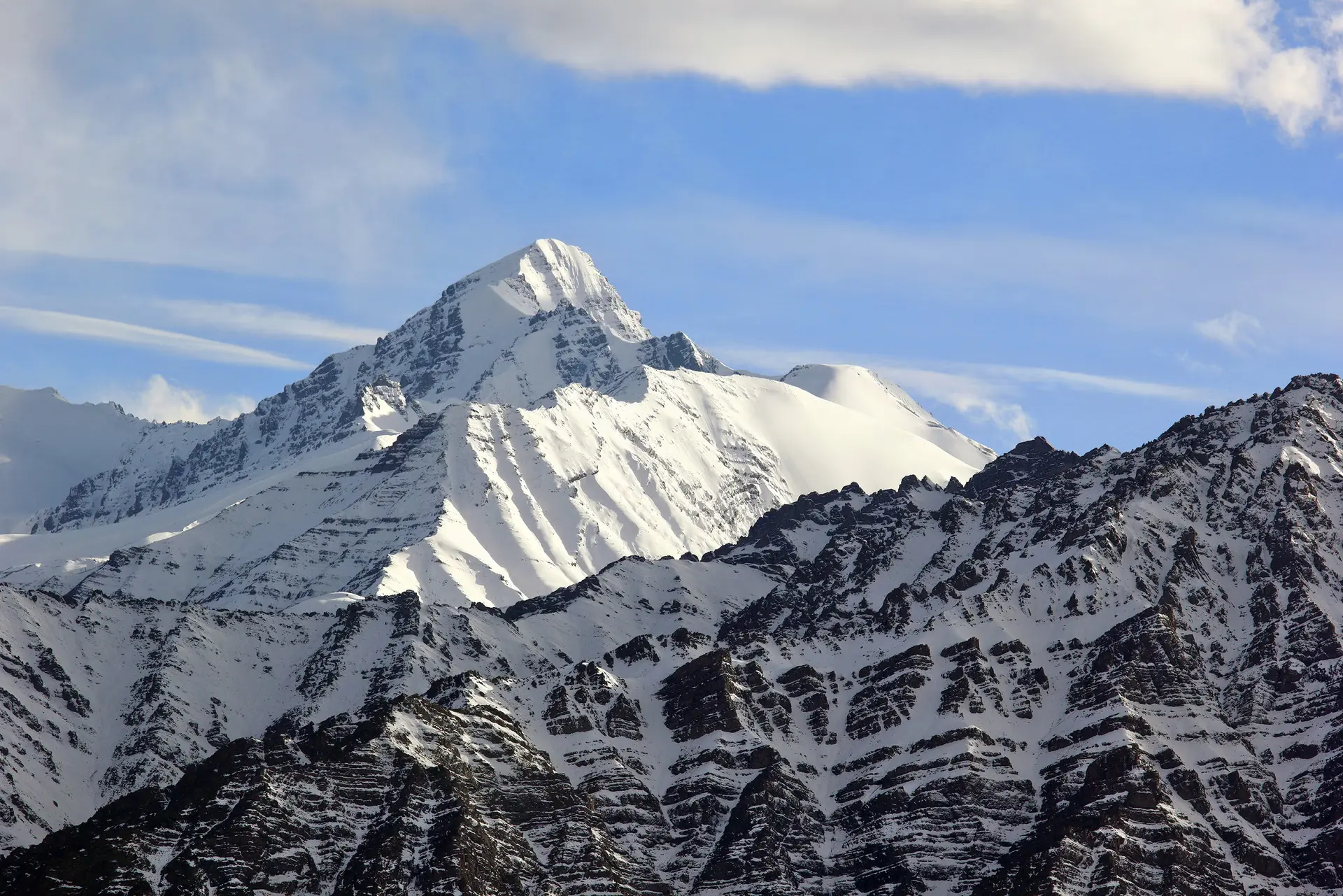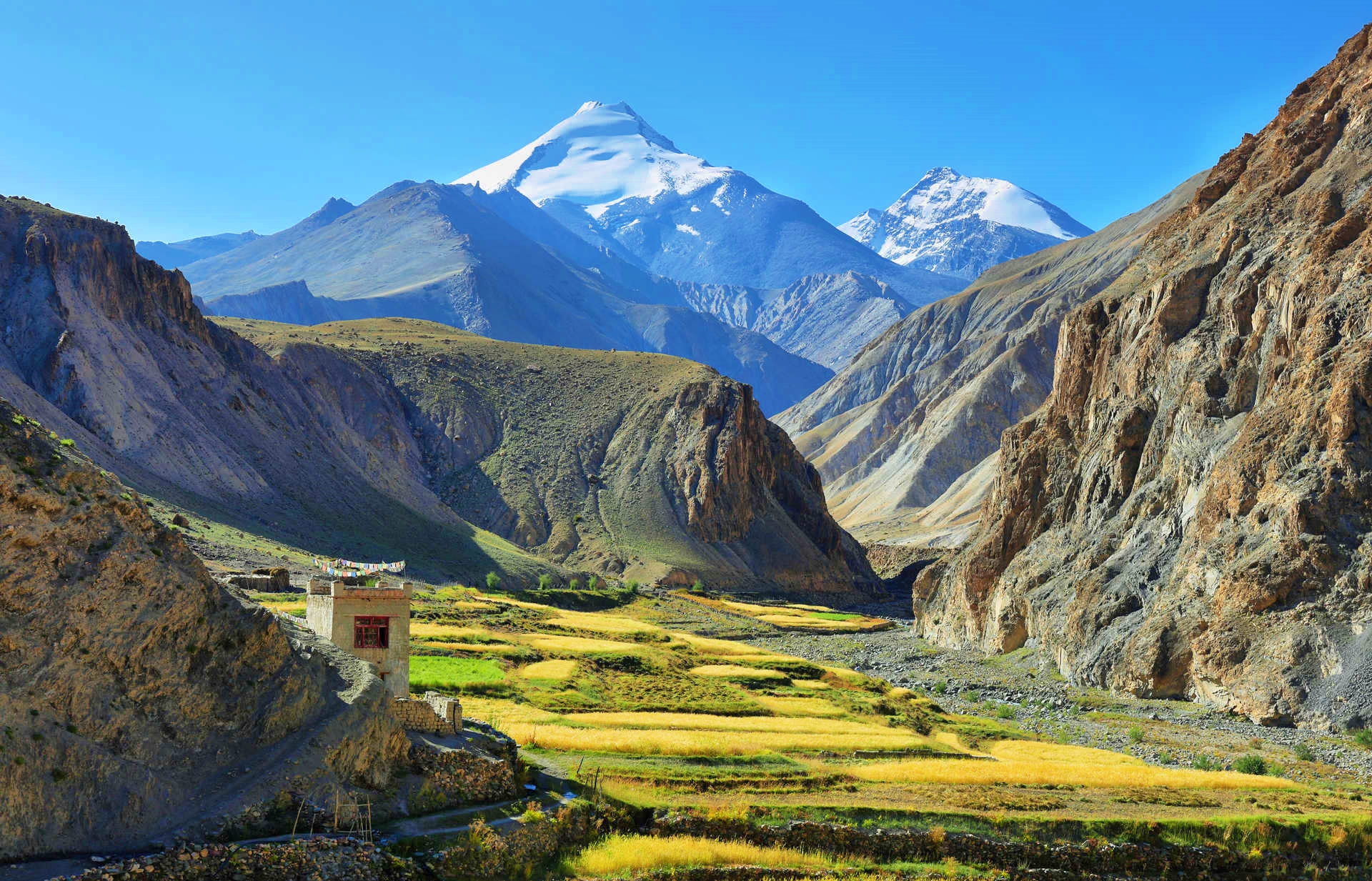Trek Grade
Challenging
Highest Altitude
6387 mtrs
Base Camp
Sankari
Best Time
may, June & Sept, Oct
Trek Distance
98 Km
Mt. Black Peak Expedition
The Kalanag Expedition, also known as the Black Peak Expedition, has become a coveted adventure for many, with climbing this majestic mountain being a lifelong dream for many enthusiasts. Located in the picturesque Uttarkashi district of Uttarakhand, it stands tall at an impressive 6387 meters, connected to the Swargarohini and Bandarpoonch peaks. The expedition begins at the base camp in Sankri, with Ruinsara Tal and Kyarkoti as the trek’s starting points. The mountain’s unique slope, resembling a snake, prevents snow from settling, giving it a black appearance from the front, earning it the name Kalanag or “Black Cobra” in the local dialect. As the highest peak in the Saraswati Mountain Range, it’s surrounded by notable peaks, including Bandarpoonch (I) and Hanuman Parvat (Bandarpoonch II), forming a breathtaking mountain range near the Ruinsara Valley.
Black Peak, the highest point in the Saraswati Range of the Garhwal Himalayas located in the Ruinsara Valley, is a testament to the thrill of mountaineering. Known locally as Kalanag due to its resemblance to a black cobra’s head, this peak reaches a height of 6,287 meters. The Bandarpunch massif, which includes White Peak (Bandarpunch II), Banderpunch I, and Kalanag (Black Peak), offers a challenging climb with its imposing structure. Black Peak’s allure and demanding ascent make it a coveted summit for avid mountaineers.
Black Peak is not just about the climb but also the journey. The trail offers breathtaking views of prominent peaks in the Garhwal range, such as Swargarohini, Bhagirathi Massif, Bandarpunch, and the Gangotri range. Passing through Govind National Park, known for its rich variety of animal life, the trail offers incredible beauty across diverse landscapes, including alpine meadows, pine forests, moraine ridges, boulders, and glacial basins.
Black Peak presents a captivating combination of aesthetics and difficulty. While the entire expedition is technically demanding, the most formidable obstacle is a steep 75-foot ice wall with a 70-degree incline between you and the summit. The journey involves:
- Traversing snowfields riddled with crevices.
- Navigating glaciers.
- Crossing extensive rocky debris while coping with the increasingly thin air at high elevations.
As such, Black Peak is a formidable undertaking requiring proficiency in mountaineering gear and specialized skills for surviving extreme altitudes. Consequently, this expedition is exclusively suited for seasoned climbers with mountaineering certification or equivalent experience in high-altitude trekking and extreme cold-weather conditions.
Trek Cost
- Stay will be on a twin-sharing basis in tents
- Trek Insurance (Mandatory)
Pickup time 6.30 A.M from Prince Chowk, Near Dehradun Railway Station
Fix Departure Dates
Mt. Black Peak Expedition Videos
Videos by experts watch these videos to prepare well for a Successful Tre

Want To Trek Like Pro?
Basically, watch these videos if you want to trek the same way professional trekkers do and make your skills better. These videos contain useful tips and techniques to further improve your trekking skills itself. These videos actually help both new and experienced trekkers improve their trekking skills. These videos definitely provide useful tips that make your trek better. We are seeing that these videos by Trekup India experts will only help you make your trekking skills better.
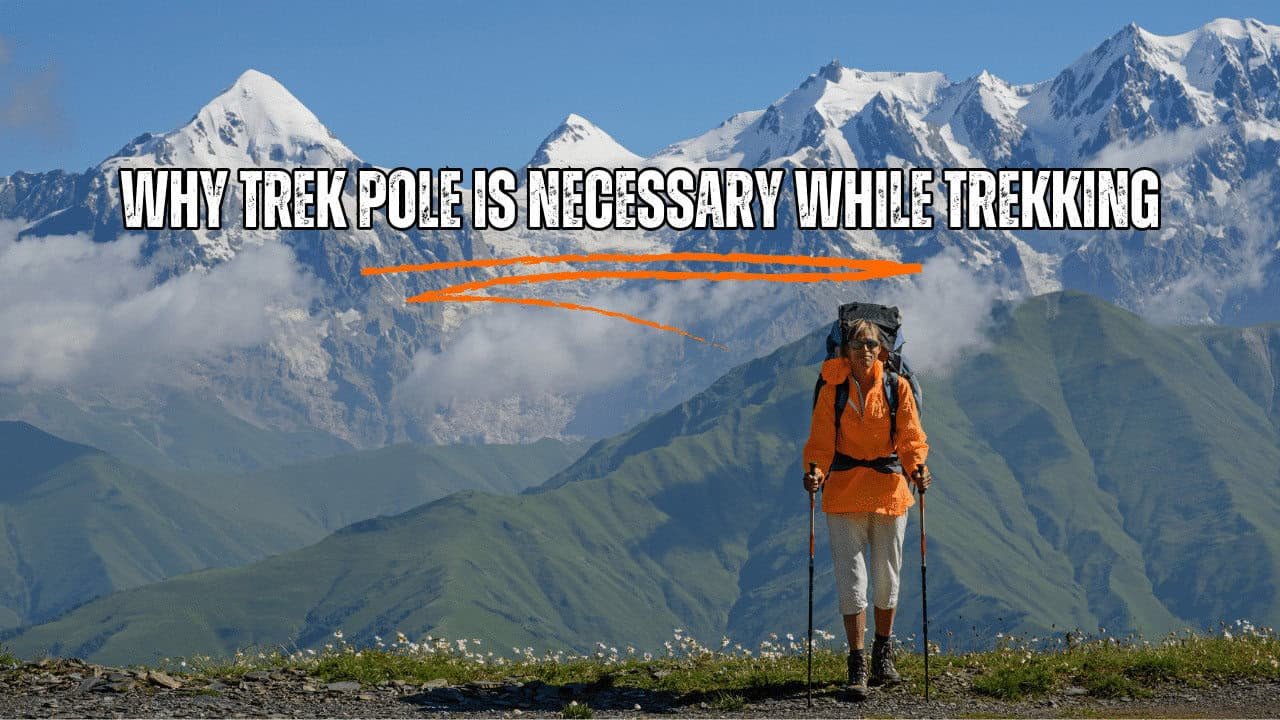
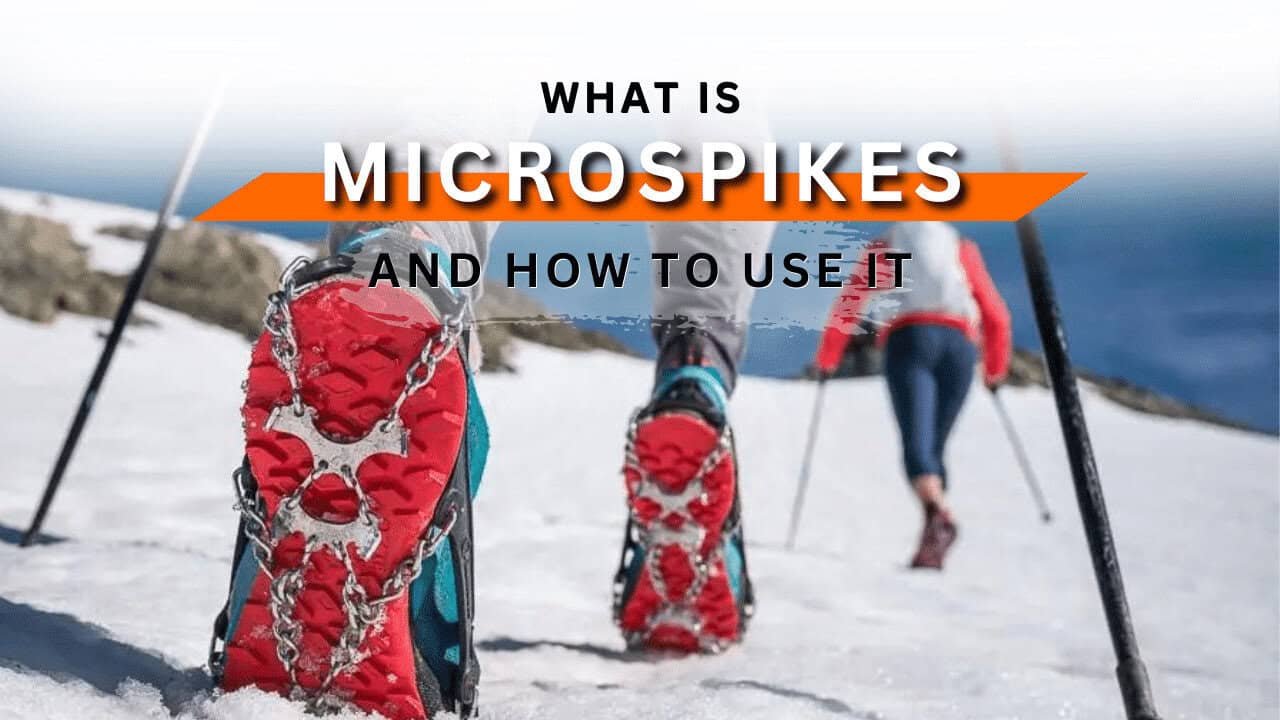
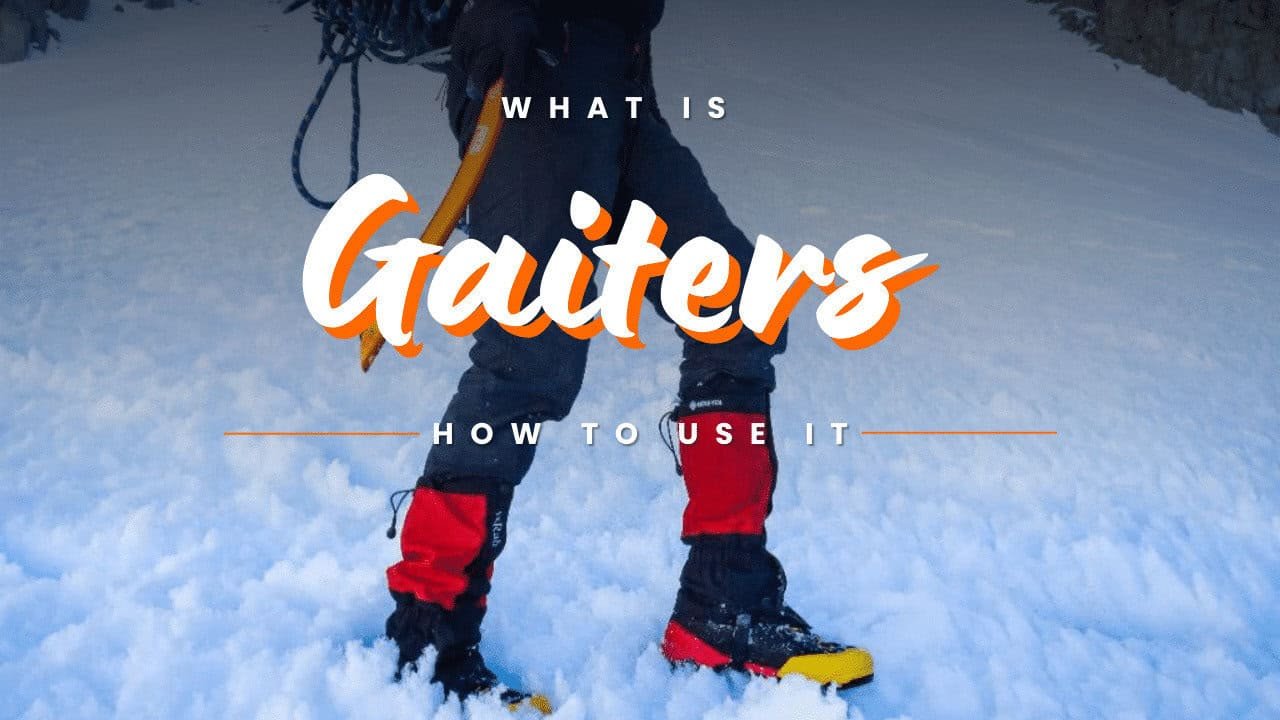
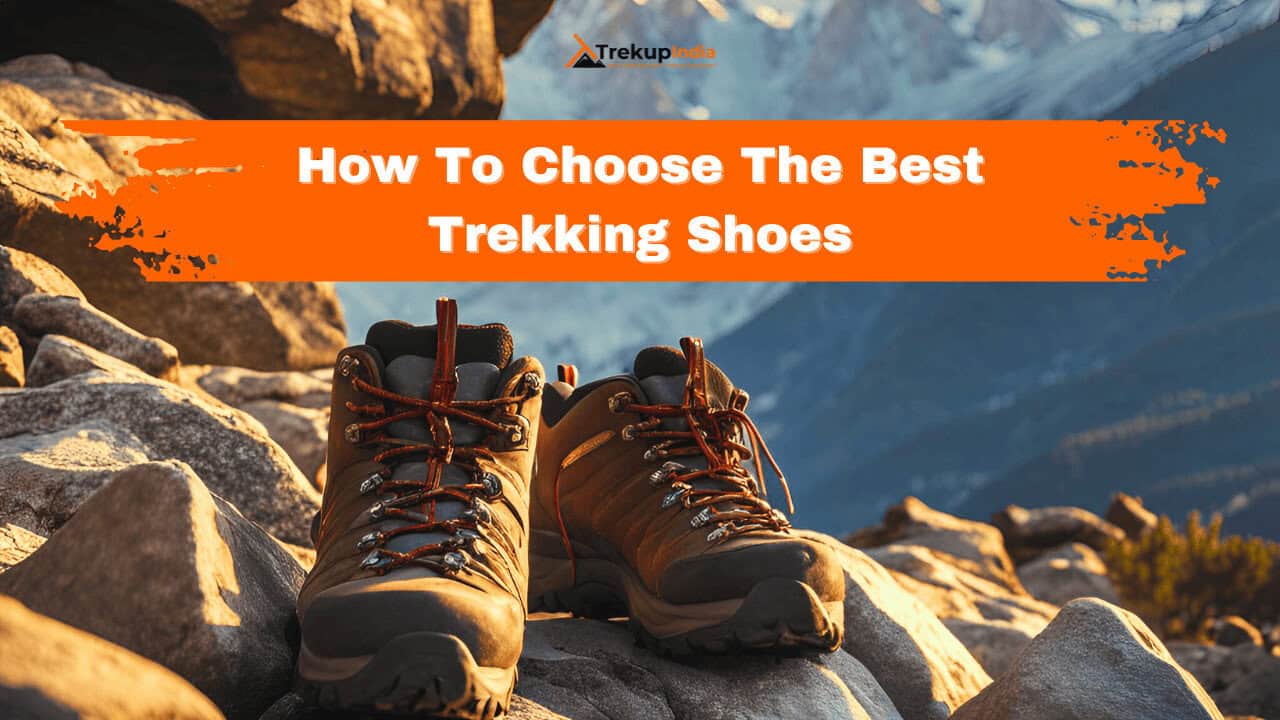

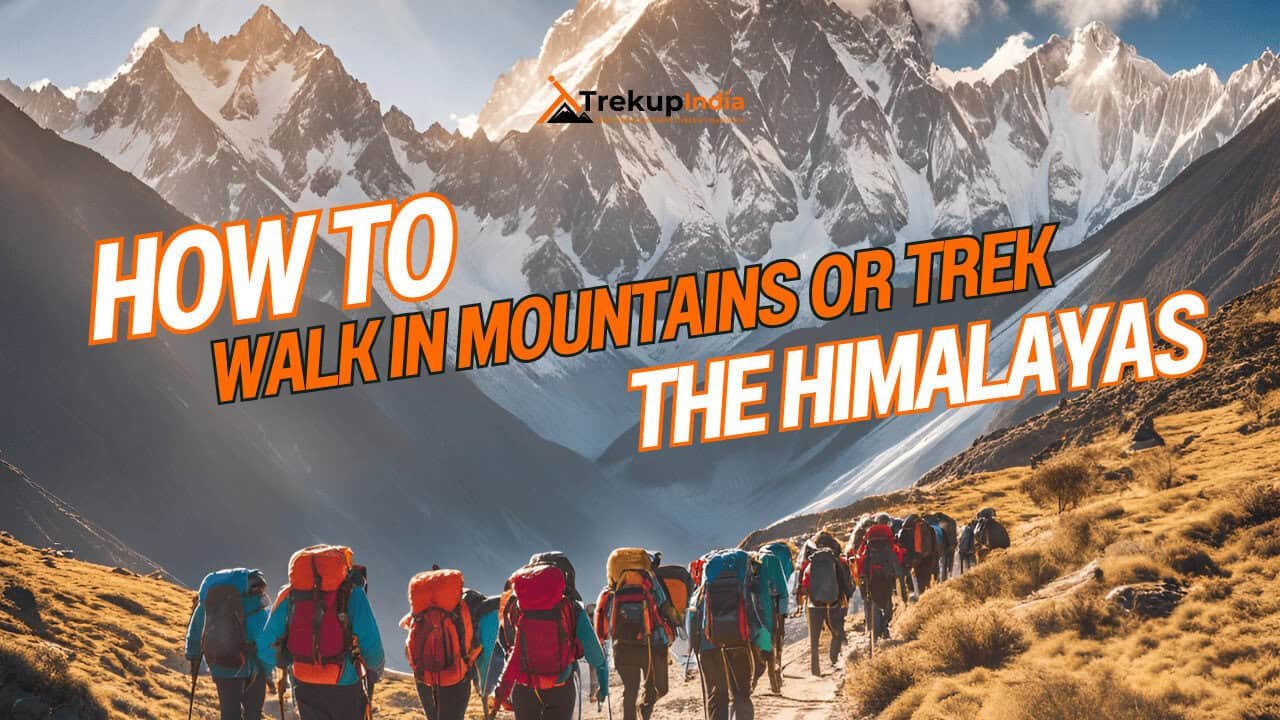

Know Everything About Acute Mountain Sickness
Acute Mountain Sickness occurs when people trek to high altitudes above 8,000 feet. This condition itself develops further due to reduced oxygen levels at such heights. Basically, as you go higher up, the air pressure and oxygen levels decrease, which causes the same problem. Acute Mountain Sickness surely causes headache, nausea, vomiting, and dizziness in affected persons. Moreover, peoples also experience difficulty in sleeping during this condition. To avoid mountain sickness, you should actually trek up slowly to higher altitudes. To learn further about this condition itself, watch the videos by Trekup India.
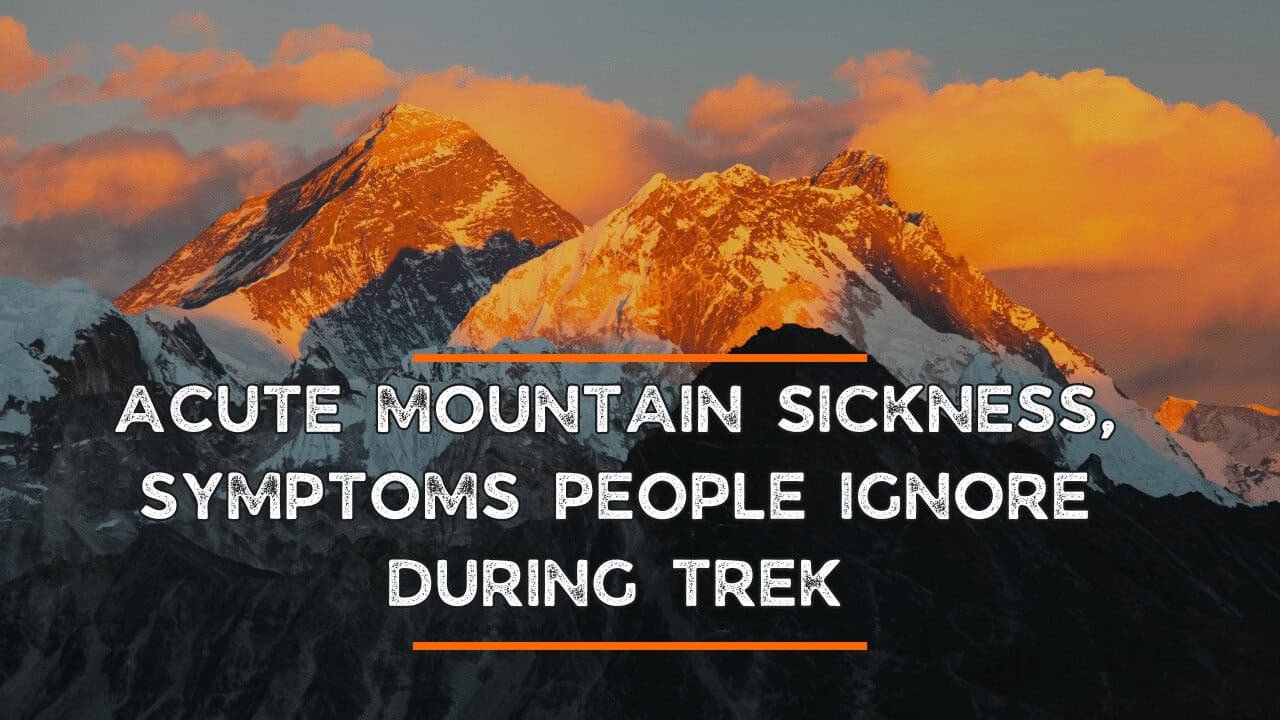
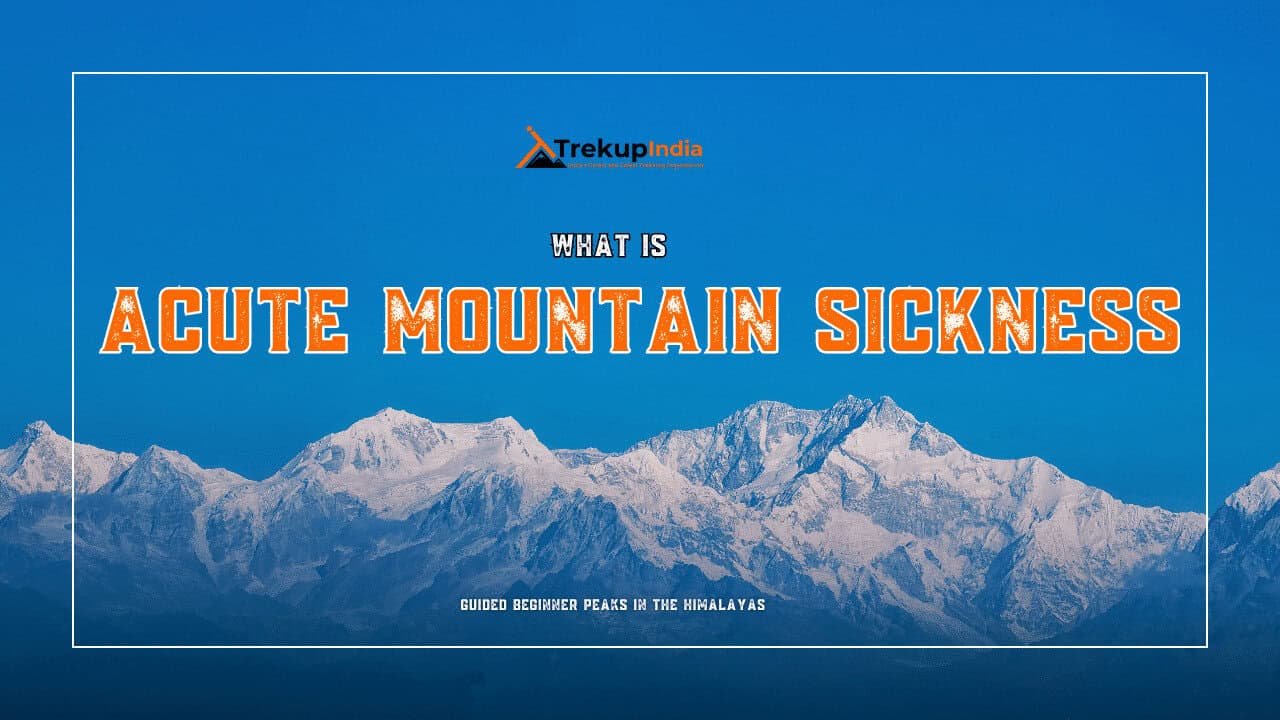
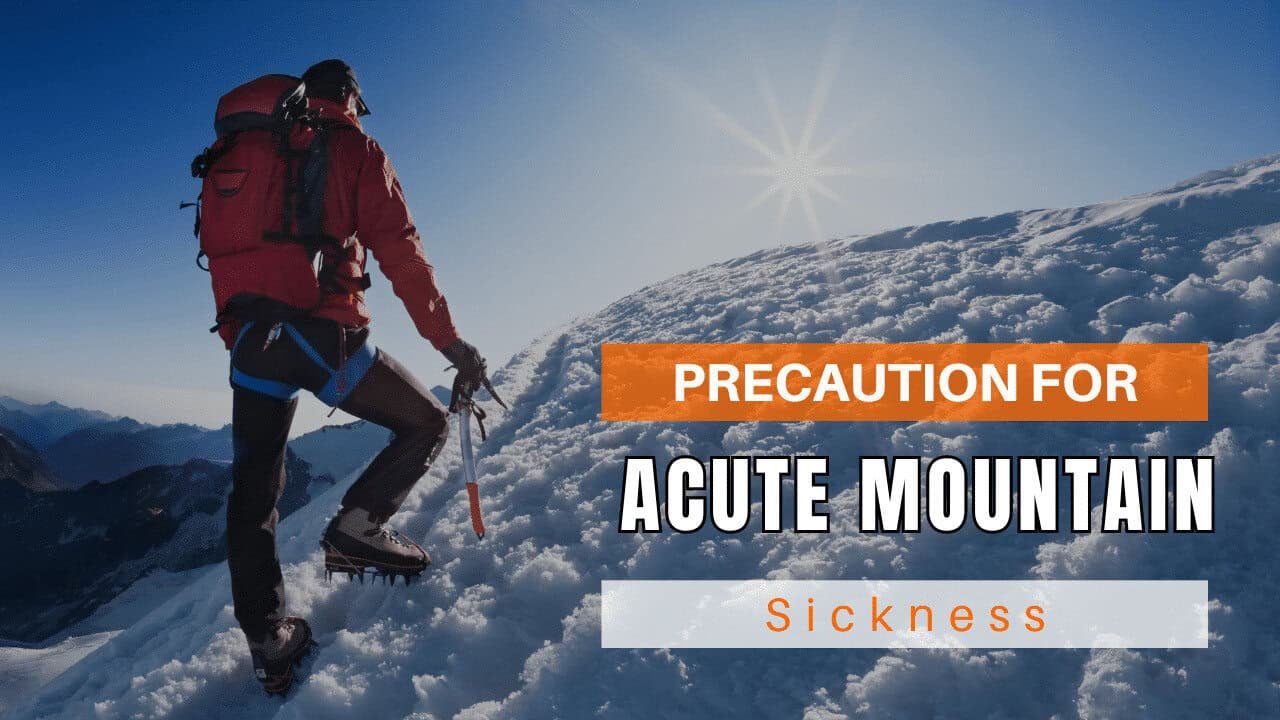
Day Wise Detailed Itinerary of Mt. Black Peak Expedition
Day 1: Dehradun to Sankri (1920 m) (210 km) (7/8 hours)
- Drive Distance: 210 Kms
- Drive Duration: 7-8 Hrs
Once you have registered with Trekup India for a journey from Dehradun to Sankri, the day starts early. We will meet at the designated spot by 7 a.m. to begin our extended trip to Sankri – a popular trekking destination in the Garhwal region of Uttarakhand. Today’s schedule involves a 9-hour drive and acclimatizing to the mountain environment. Departing early is advisable for two key reasons:
First, we aim to arrive early to allow our bodies sufficient time to rest before the upcoming day. Second, mountain roads are known for their unpredictability, so it is wise to factor in potential delays at the beginning of our journey. It’s also preferable to reach our destination before nightfall.
Nestled in the heart of majestic mountains, Sankri is the primary departure point for numerous trekking expeditions, attracting adventurers throughout the year. This quaint village is the launching pad for iconic trails like Har ki Dun, Baraadsar Lake, Bali Pass, Kedarkantha, Dev Kyara, and Phulara Ridge, offering breathtaking journeys through the region’s most spectacular landscapes.
The journey from Dehradun takes us along picturesque mountain routes. These gentle roads, despite their winding nature that may cause slight motion sickness, are a sight to behold. The varying scenery at every twist and turn is a captivating distraction. The sights of towering trees, expansive fields, and terraced mountain slopes used for farming are too stunning to overlook in favour of rest. While passing through sizable towns, the drive also transitions between small sections of bustling streets lined with village stores and lengthy deserted stretches filled only with the soothing sounds of the wind and birds.
The oscillation between bustling noise and peaceful tranquillity brings a unique calmness. Moreover, stopping at local eateries along the way allows us to savour the flavours of regional specialities for breakfast and lunch. The final stretch of the drive is a breeze, winding through a picturesque road flanked by dense forests that revive us after the long journey. The forest’s radiance is enough to rejuvenate us as we approach our destination. As a hub for many popular treks, Sankri offers ample amenities. Although phone connectivity is scarce in Sankri, you can likely find a market stall willing to provide wi-fi access in case of an emergency. Rest assured, you’ll have all the necessary facilities to make your stay comfortable and enjoyable.
At the conclusion of this demanding trek, we will be welcomed to a welcoming homestay made of wood, with comfortable accommodations and a homemade meal.
Day 2: Reserved for Briefing
Get yourself ready for today’s expedition. Our professional leader will provide a briefing and all the details. Complete the necessary documentation, then you can rest or go for a short hike.
Day 3: Sankri to Dharkot Village by Drive & Trek From Dharkoat to Seema by Trek
- Trek Distance: 4 Kms
- Trek Duration: 4 Hrs
- Drive Distance: 16 Kms
- Drive Duration: 1 Hrs Approx.
After having breakfast, we will leave for Dharkoat village. We will drive from Sankri to Dharkoat village early in the morning. On the way to Dharkoat, you will pass through dense forests as well as beautiful water streams pouring down the roads, and you will also come across the rich cultural village Dhatmeer.
You can hear the chirping of birds and rare species of birds that are found only in the mountains. The state bird of Uttarakhand, the “Himalayan Monal,” is also found in the area of Taluka.
Get ready to enjoy the stunning views of sprawling wild orchids and, if you are lucky enough, you will also encounter the wilderness of the Himalayas, such as leopards, barking deer, boars, and many others.
You will also pass through the small village Taluka while driving from Sankari to Dharkoat village. It’s important to know that Taluka is a small yet beautiful village with traditional house structures and a few dhabas that serve simple and lip-smacking food. After reaching Dharkoat, all the trekkers will rest for some time and then finally start trekking for Seema, which is 4km away from Dharkoat.
On the way, you will also encounter snow in patches where the sun does not get the chance to enter for a long time. It is important for you to know that Seema is not a village but only a shelter point for tourists.
During trekking, you will experience great adventure because at the time of trekking you will not only come across rocky surfaces, but also traditional wooden bridges as well as green trails with the Supin river flowing on your left side.
You will also witness different animals and birds too while trekking that are often found only in mountains. During the trek, you will find several spots of water streams that offer fresh drinking water. By the evening, you will reach Seema via Gangar village.
Just before Seema, all the trekkers will camp on a small green field from where you can enjoy breathtaking views of nature.
Day 4: Seema to Ruinsara Tal
The Ruinsara Tal Lake, located at an altitude of 3,500 meters, is highly revered by the local population. It is a stunning highlight of the Ruinsara trek, popular among adventure-seekers heading to the Har Ki Doon Valley. The picturesque lake, surrounded by various alpine flora, is 14 kilometres from Seema. According to local legends, this path was taken by the Pandavas on their way to heaven via the majestic Swargarohini peak, which is visible along the trail. Upon arrival at this beautiful campsite in the early evening, visitors can relax and enjoy the breathtaking scenery.
Day 5: Ruinsara Lake to Base Camp (Kyarkoti) (3900 m) (7 km) (5/6 hours)
- Trek Distance: 7 Kms
- Trek Duration: 5-6 Hrs
The impressive Black Peak gradually appears while trekking from Ruinsara Tal to Kyarkoti Base Camp. Kyarkoti Base Camp is a vast expanse of grass surrounded by rocks and snow-covered peaks, with the campsite beside a spring. Experience the thrill as you approach the captivating Black Peak, feeling the excitement build within you. Take a moment to admire your ultimate destination, towering proudly in front of you for the first time during the trek! During the 5-6 hour trek from Ruinsara Tal to Kyarkoti Base Camp, you will gradually catch sight of the impressive Black Peak. Kyarkoti Base Camp is a vast grassland surrounded by rocks and snow-covered peaks, with the campsite located next to a spring. Experience the excitement as you approach the captivating Black Peak and take a moment to admire this ultimate destination, proudly towering in front of you for the first time during the trek!
Day 06 to Day 15: Acclimatization, Load Ferry, Expedition
Due to the unpredictable nature of high-altitude environments, flexibility is critical. Plans must be continually reassessed and adapted to suit the prevailing circumstances. As a result, creating a rigid daily itinerary can be challenging. However, the general plan typically involves a cyclical rotation between camps, a standard procedure for acclimatizing on high-altitude expeditions. The ascent of Black Peak involves establishing three camps beyond base camp: Advanced Base Camp at 4,600 meters, Camp 1 at 5,100 meters, and Summit Camp at 5,500 meters.
To successfully navigate high-altitude climbs, expeditions often rotate between camps to facilitate gradual acclimatization. This approach is rooted in the “climb high, sleep low” principle, a crucial guideline for survival in high-altitude environments. For Black Peak, we implement a two-round rotation. On the first day, we transport our gear to the next camp, deposit it, and then return to the lower campsite for the night. The following day, we ascended to the camp, where we left our gear and set up our tents to occupy the site. This tactic yields three significant advantages:
- It allows us to distribute our load over two days, avoiding the need to carry excessive weight in a single trip.
- It exposes our bodies to higher elevations while giving them time to adapt, reducing the risk of altitude-related issues.
- Repeated ascents of the same route enable us to refine our techniques, build our skills, and improve our environmental adaptation.
The expedition will encompass adequate acclimatization, rotation periods, scheduled breaks, and the option for two summit tries if weather conditions are unfavourable.
The ascent from Base Camp (3,820m) to Advanced Base Camp (4600m) presents a significant elevation increase, offering a valuable opportunity to acclimate to the mountain’s slopes and terrain. The route winds through lush grasslands, navigates a rocky section, and tackles a steep incline prone to landslides, eventually leading to a moraine-covered landscape and a glacier. This challenging hike typically requires around 4-5 hours to complete.
From Advanced Base Camp (4,600m) to Camp 1 (5,100m), the landscape unfolds with familiar features – rugged moraines, slow-moving glaciers, and expanses of ice. As you progress, you’ll notice a sense of comfort and familiarity, as if the previous day’s challenges have been tempered, making the journey feel more manageable this time.
From Camp 1 (5,100m) to Summit Camp (5,500m), the breathtaking vistas of Swargarohini to the north and Bandarpooch to the south serve as a backdrop to a rugged landscape dotted with concealed and exposed glacial fissures. To successfully reach the peak’s summit, it’s essential to acclimate gradually to the harsh environment, navigate the treacherous terrain, and overcome its obstacles.
We embark on the final ascent to the summit in the darkness of night, confronting the biting cold and fierce winds that come with high altitude. The climb is steep and demanding, involving the navigation of near-vertical ice faces with inclines of 70-75 degrees and heights of 75-85 feet, which will require using fixed ropes and jumars for support. Rest assured, our safety is our top priority. In contrast to the peak’s treacherous slopes, the summit itself is relatively flat. Our goal is to reach the highest point of this stunning mountain in 7-8 hours and begin our descent promptly, aiming to return to the safety of our camp before the snow becomes unstable. It’s crucial to exercise extreme caution on the way down, as descents can be even more hazardous than ascents.
We aim to make our initial summit attempt on Day 10, descend to Base Camp by Day 11, reach Ruinsara Tal by Day 12, and arrive at Seema by Day 13 to return to Sankri, where our trek began by Day 14.
Day 16: Sankri to Dehradun
- Drive Distance: 210 Kms
- Drive Duration: 7-8 Hrs
As we near the end of our journey, let’s celebrate with a festive gathering at the summit. It’s essential to mark the conclusion of this incredible adventure with a joyful celebration. However, it’s crucial to remember that high-altitude conditions, including the weather, can be unpredictable. To avoid potential logistical issues, we suggest adding some flexibility to your schedule by allowing for a few extra days between the end of the expedition and your return travel plans.
Day 17: Reserve Day
Day 17 serves as a backup day in case of unforeseen circumstances such as inclement weather or unexpected challenges that may disrupt our expedition schedule. It will only be used if last-minute and unpredictable conditions arise, preventing us from reaching our destination on time.
Mt. Black Peak Route Map
We’ve prepared a comprehensive Trek Route Map for your upcoming adventure to Mt. Black Peak, which outlines the entire journey including all stops and trails. This map provides detailed information on the terrain, distance between points of interest, and estimated travel time to help ensure a safe and enjoyable trek. We’ve carefully curated the map to ensure that you have all the necessary information at your fingertips. Please take a moment to review it thoroughly, and don’t hesitate to reach out if you have any questions or concerns.
Mt. Black Peak Altitude Chart
The Trek Altitude Chart is a useful tool for Trekkers to monitor their altitude changes during their rides, allowing them to plan their routes more efficiently and track their progress over time. This Mt. Black Peak chart is beneficial for both casual and experienced Trekkers, helping them make the most out of their Trek experience.
Trek Cost Inclusions
- Stay: 14 Nights of tented accommodation at individual campsites of Trekup India on twin sharing and 2 nights at Sankari.
- Meals: Trekup India will provide freshly cooked meals during the trek starting with Dinner on Day 1 to tea, coffee on day 16 (Meals are simple, nutritious, and vegetarian)
- Transport : Dehradun to Sankari and return.
- Trek Insurance (Optional): Trekup India recommends that all trekkers consider getting trek insurance. This is optional, but highly recommended. Trek insurance covers unexpected events that may occur during your trek. The cost of the insurance starts from INR 210. Please read more about what is included in the coverage and why it is mandatory on treks.
- Trek Equipment: Sleeping bag, Sleeping tents, Kitchen tent, Dining tent, Toilet Tent.
- Amenities: All utensils, sleeping mattresses (Black foam mats), Crampons, and Gaiters for snow.
- Health & Safety: First Aid Box, Oxygen Cylinders, Stretchers, Oxi meters, BP Machines, health.
- Permits: Forest Permits and Camping Permission Fee
- Trek Crew: High Altitude Chef, Helpers, Trek Leader & Guides, and other support teams.
- Potters & Mules: Potters and Mules are to carry all trekking equipment, ration, and vegetables.
Trek Cost Exclusions
- GST 5% (it is Mandatory)
- Any Meals/accommodation beside the itinerary or not mentioned in the program.
- Any Bus / Airfare to/from trek start/end point
- Personal Medical expenses do carry your medication.
- Any personal services such as Laundry, phone calls, liquors, mineral water, etc.
- Any still / video camera fee
- Any Entrance fee Monuments, Monasteries, Museums, Temples – Pay directly on the spot.
- Mules or porter charges to carry private baggage (Offload Charges for bag 365 per day, per bag if paid online (at base camp 2,550). Note: Bag weight should not be more than 10 kg.
- Any emergency evacuation charges
- Any services that are not mentioned in the cost inclusion section.
What should you pack for the Mt. Black Peak
Mt. Black Peak is a high-altitude trek. The trekking gear you have to have for this particular trek differs from normal treks. Thus, read this whole segment. There is an important question that the trekker who is doing trek asks, like what all things to carry while trekking. Below, we have provided the details on everything you should take; an easy way to remember is by Head to foot or foot to head. We have prepared from Head to foot.
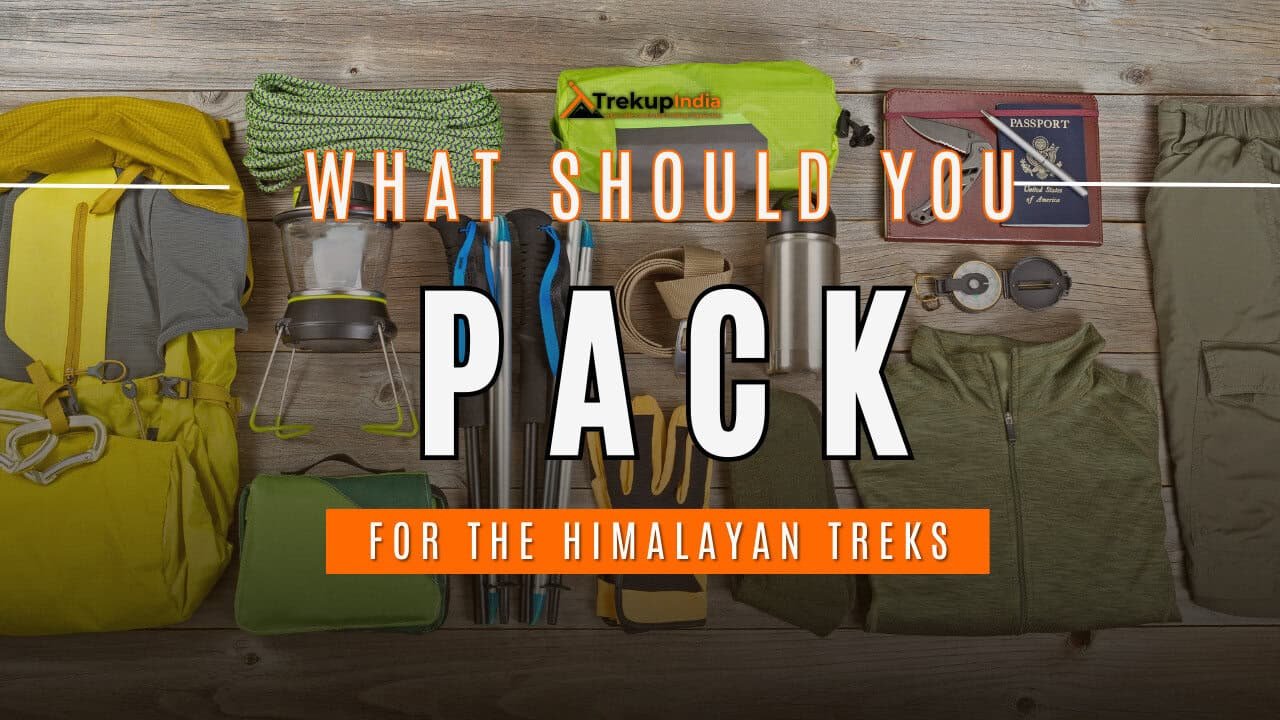
Head Gears
When trekking it's important to carry headgear to protect your head and face.
Heading out for a trek? Don’t forget to carry headgear to protect your beautiful face and head from the sun, wind, and dust! It’s an essential accessory that keeps you safe and comfortable throughout your adventurous journey. So, make sure you pack it before you step out into nature!
- Head Lamps – When trekking at night, headlamps are essential to illuminate your path while keeping your hands free. Headlamps come in different sizes and lumens, so it is essential to choose one that suits your needs.
- Hats or Cap – Caps or hats are also necessary when trekking in different weather conditions. Caps protect your head from the wind and freezing temperatures at night, while hats provide shade and protection from the sun during the day. It’s essential to ensure that your hat has a strap to prevent it from being blown away by the wind.
- Sunglasses – Sunglasses are also essential for trekking. Your sunglasses should protect your eyes from harmful UV rays and fit your face perfectly to avoid falling off while climbing, jumping, or crossing obstacles. The glass of your sunglasses should also be designed for different weather conditions to provide optimal visibility.
- Buff / Balaclava – Lastly, a buff or balaclava is a must-have to protect your mouth or neck from extreme temperatures and keep them warm. Buffs and balaclavas come in different materials, thicknesses, and designs, so it’s important to choose one that suits your needs and preferences. Depending on the weather conditions and your activities, you can wear them as neck warmers, face masks, or headbands.
Clothes
When trekking in high altitudes, prepare for cold weather by wearing layers. Layering traps heat, keeps you warm, and allows you to easily adjust your clothing as temperatures fluctuate.
Layering is important for different seasons when trekking. When planning a high-altitude trek, it is important to prepare for the cold weather. Wearing layers is the best approach as it provides both protection and flexibility when the weather changes frequently in the mountains. Layering helps to trap heat and keep your body warm, while at the same time allowing you to easily adjust your clothing as the temperature fluctuates. By wearing layers, you can enjoy your trek comfortably and stay safe in the unpredictable mountain weather
- For spring, summer, and monsoon treks, consider wearing three layers: a woollen sweater, a fleece, and a padded jacket.
- For autumn treks, add one more fleece layer to make it four layers.
- For winter treks, you may need five layers with thermals, a woollen sweater, two fleeces, and a padded jacket.
- T-shirt/sleeve shirt– Bring three T-shirts and two quick-dry trek pants, wearing one and carrying the others. Long sleeve shirts help to protect from sun UV rays. We recommend synthetic T-shirts as they get dry quickly when they get wet.
- Hiking / Trekking Jacket– down jackets (-5 to-10 C) or two-three-layer jackets.
- Thermals– at least two pairs of thermals help keep the body warm during cold weather.
- Undergarments– you can carry them according to your habitual and hygiene requirements.
- Gloves– 1 pair of gloves will keep your hand warm and nice.
- Trek Pants– Bring 2 to 3 comfortable trekking pants. Trekking pants play a significant role, as they are designed for comfort and mobility, making trekking easier. It should be Synthetic so that it gets dry quickly when wet.
- Rain Wear– you can carry a raincoat or Poncho. During long rains and snowfalls, the waterproof jackets start leaking. Still, the Poncho and raincoats keep you dry, so choose accordingly.
Tip: If you choose a raincoat on your trek, carry a small waterproof cover so things inside your backpack can’t get wet. If you carry a Poncho, you don’t need to worry. It protects both you and your backpack.
Foot Gears
When it comes to planning a trek, one of the most important aspects is to ensure that you have the right kind of foot gear.
- Trekking shoes which are waterproof and have ankle support. Walking / Hiking sandals which can be used off the trek, i.e., in the morning and evening hours when you reach the campsite, basically to get your feet rest from heavy boots, sometimes used for crossing streams and rivers, it’s more comfortable and safer than crossing barefoot or wetting your shoes. Sneakers (Optional) can be worn for normal driving days or used around the camp.
- Socks– you should at least carry 3 to 4 pairs.
- Microspikes & Gaitorswill be provided by Trekup India when required. You don’t have to carry them.
Personal First Aid Kit
Don't forget to pack your personal first aid kit! It's always better to be safe. So, make sure you're prepared for any unforeseen circumstances.
Below are some common medicines generally required/used during your adventure trip; however, please consult your doctors prior.
- Antiseptic towel or water syringe (to clean the wound)
- Butterfly bandage for a small cut
- Cotton and elastic bandages and sterile gauze pad for larger wounds
- Latex gloves are used when the wound bleeds.
- Medicine for Diarrhea (Upset stomach)
- Medicine for cold, flue/fever, headache
- Some pain killers
- ORS pouches
- Quick pain relief spray (External use)
- Any personal medicine prescribed by your doctor
- Dimox / Similar for high altitude sickness
- Bug Repellent
- Carry some nutria/energy bars and drinks (non-alcoholic)
- Note: Kindly consult your doctor before purchasing or taking any medicine.
Gadgets and Other Items
You might also consider bringing a camera, binoculars, portable charger, and snacks. Be well-prepared and tackle any trail with confidence.
- Trekking Poles
- Mobile phone
- Camera
- Spare batteries for phone and camera, power bank
- Lightweight flashlight or headlight
- A waterproof bag made of plastic is used for the camera.
- Plug/converter for electrical items
- 1-litre water bottle
- A journal with a pen would be a good idea to keep your notes.
- Some book of your interest for the ideal time
- Get into the habit of maintaining a Map and guidebook of the region.
Hygiene & Personal toiletry
Remember to pack hygiene and personal toiletry items such as soap, shampoo, toothbrush, toothpaste, deodorant, and toilet paper.
- Sunscreen with UV protection to shield your skin from harmful rays
- 1 or 2 small quick-drying towels to help you dry off quickly in case of rain or sweat
- Toilet paper, tissues or wet wipes for maintaining hygiene while on the trek
- Toothbrush, toothpaste, and mouth freshener to keep your mouth clean and fresh throughout the journey
- Deodorant or talcum powder to help you stay fresh and odor-free, especially during hot and humid climates
- Shampoo to keep your hair clean and healthy
- Sanitary pads or tampons (for female trekkers) to manage menstrual cycles
- Lip-gloss or salve to protect your lips from dryness and chapping
- Bio-degradable soap to keep yourself clean and hygienic while on the trek
- Nail clipper and other personal items that you use daily
Compulsory Documents to Carry
There are certain documents that you should always carry with you. These documents are not only necessary for your safety and security, but they may also be required by local authorities.
These files must be submitted to the Forest Department before your trek. With none of these, you will not be permitted to trek—original and photocopy of government photo identity card. Carry IDs like Aadhaar, voter ID, etc.
How To Plan Your Trek & Reach Sankari?
By Air:- The Jolly Grant Airport is the nearest airport to reach Dehradun by flight, located almost 25km away from the city. Regular flights are available from Delhi to Dehradun. However, if you plan to arrive in Dehradun by flight, it is advisable to arrive one day in advance.
By Train:- If you prefer to reach Dehradun by train, two express trains are convenient options. Nandadevi Express (Train no: 12205) departs at 11:50 pm and arrives at 5:40 am, while Dehradun Express (Train no: 12687) departs at 9:10 pm and arrives at 5:00 am. The train journey is overnight.
By Bus:-There is also a regular bus service from Delhi to Dehradun, with both AC and non-AC buses available from the main bus station, ISBT Kashmere Gate. However, it is recommended to take government buses from Kashmere Gate ISBT. The bus will drop you off at Dehradun ISBT, and our staff will pick you up from Dehradun Railway Station, so make sure to reach there.
A Travller or similar vehicle will pick you up from Dehradun Railway Station at 06:30 am, and you will reach Sankri by 05:00 pm.
Fitness Required & Preparation Guide For Mt. Black Peak
If you’re preparing for a Mt. Black Peak, Trekup India recommends jogging as part of your fitness routine. Jogging helps work out the same muscle groups that you’ll use during trekking and can help you build endurance. You don’t need any special equipment to get started.
Fitness Target
Trekup India has put the Mt. Black Peak into an Challenging grade Expedition.
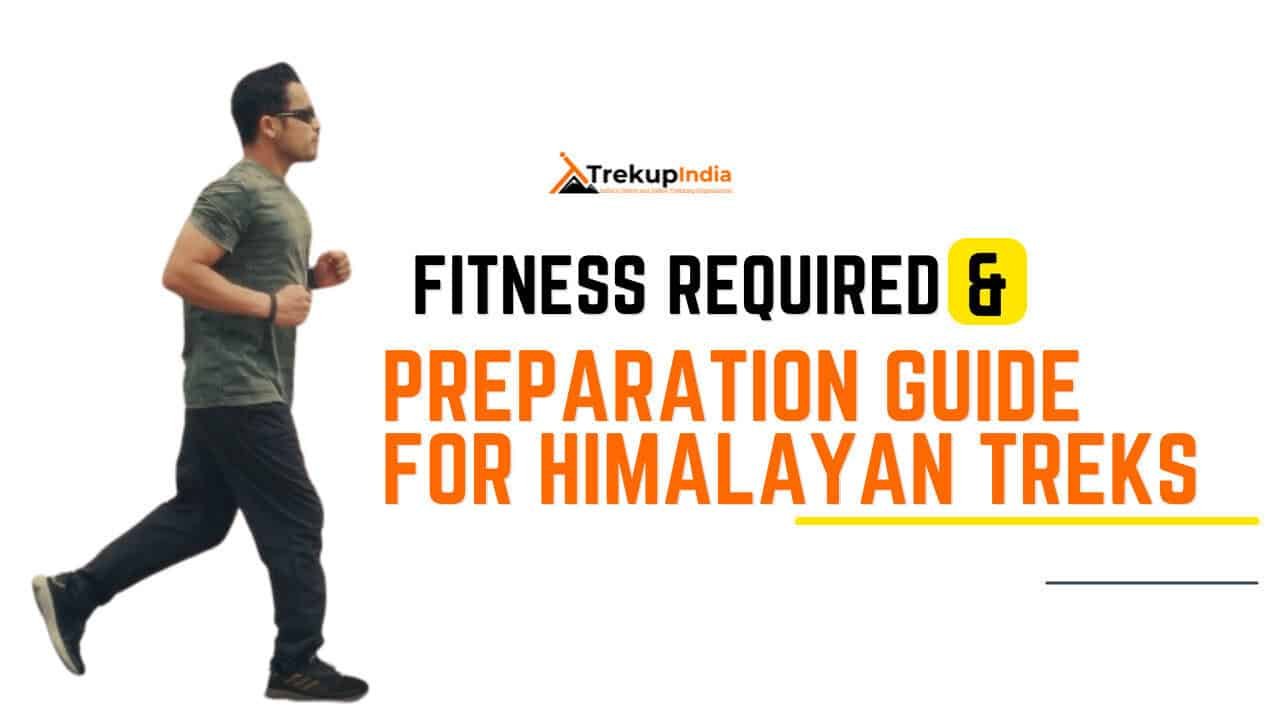
For Difficult – Challenging Treks – In order to be well-prepared for your upcoming trek, it is recommended that you focus on building your endurance by aiming to cover a distance of 5.5 kilometers in less than 45 minutes. This will help you to develop the necessary stamina and strength required to successfully complete your journey.
How to Achieve This Fitness Target?
To start preparing for your trek:
- Try jogging for at least five days every week.
- If you find 5 km too difficult at first, begin with 2 km and gradually increase over 2-3 weeks.
- Once you feel more comfortable running 5 km, focus on improving your speed gradually on a daily basis.
It is important to ensure that you can consistently complete 4.5 km in under 40 minutes for at least two weeks before your planned trek. Allow yourself 6-8 weeks to prepare physically for the journey.
Strength Training exercises that benefit Trekking
Trekking is an activity that demands a good level of strength.
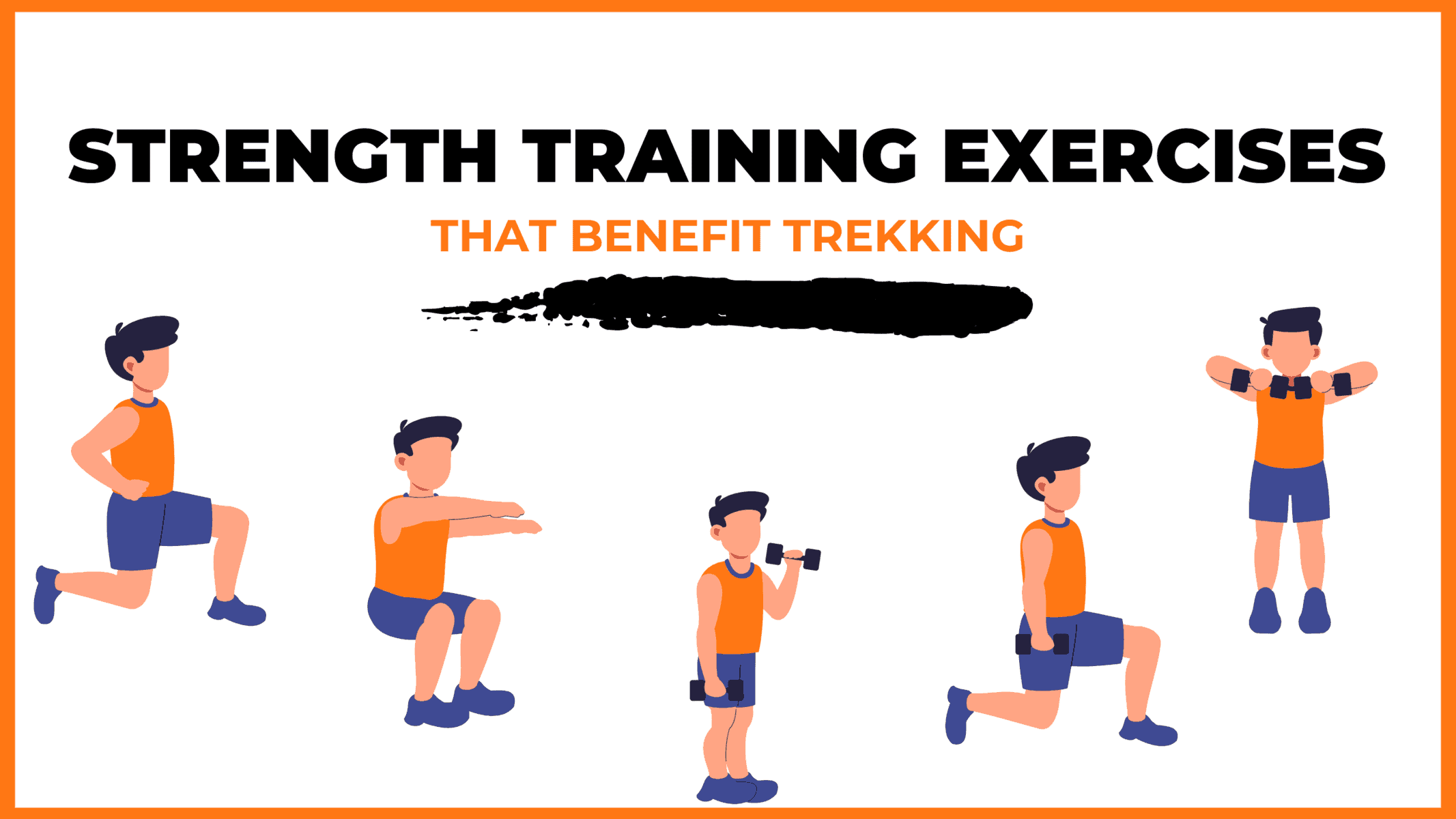
Trekking is a demanding activity that requires good cardiovascular endurance, muscular strength, and overall fitness. To help you prepare for your trek, incorporating bodyweight exercises into your training routine can be an effective way to build strength, improve stability, and enhance endurance, all of which are crucial for a successful trek. In this regard, here’s a breakdown of body weight exercises categorized by the specific body parts they target and the benefits they offer during trekking.
1. Lower Body Exercises
Lower body exercises like squats and lunges are great for building lower body strength, essential for trekking.
a. Squats
Squats are an excellent exercise for building lower body strength, essential for trekking. They target the quadriceps, hamstrings, glutes, and calves. Solid quadriceps and glutes provide power for ascending and tackling uphill climbs, while vital hamstrings aid stability during descents. This is particularly helpful in navigating uneven terrain during trekking.
How to perform Squats Exercises:
- Stand with feet shoulder-width apart, toes pointing slightly outward.
- Lower your body by bending your knees and hips, keeping your back straight.
- Lower until your thighs are parallel to the ground or as low as comfortable.
- Push through your heels to return to the starting position.
b. Lunges
Lunges target the quadriceps, hamstrings, glutes, and calves. They improve lower body strength, balance, and stability, crucial for maintaining control on rocky trails and steep slopes. Additionally, they enhance flexibility, reducing the risk of injury while trekking.
How to Perform Lunge Exercises:
- Stand with feet hip-width apart, hands on hips or sides.
- Take a step forward with one foot, lowering your body until both knees are bent at 90-degree angles.
- Push through the heel of your front foot to return to the starting position.
- Repeat on the other side, alternating legs.
2. Upper Body Exercises
Upper body exercises such as push-ups and pull-ups effectively strengthen the upper body, especially the chest and shoulders, which are essential for carrying a backpack during treks.
a. Push-Ups
Targets: Chest, shoulders, triceps, and core.
Benefits for Trekking: Push-ups are an effective exercise to strengthen the upper body, especially the chest and shoulders, essential for carrying a backpack during treks. Improved upper body strength will also help maintain posture and stability while traversing challenging terrain.
How to Perform Push-Ups Exercises:
- Start in a plank position with hands shoulder-width apart and body in a straight line from head to heels.
- Lower your body by bending your elbows until your chest nearly touches the ground.
- Push through your palms to return to the starting position.
- Keep your core engaged throughout the movement.
b. Pull-Ups/Bodyweight Rows:
Targeting the back, biceps, and shoulders can significantly benefit trekking. You can strengthen these muscle groups by performing pull-ups or bodyweight rows and improve your posture and balance while carrying a backpack. Additionally, more muscular back muscles can help reduce the risk of back strain and fatigue during long treks, making your journey safer and more comfortable.
3. Core Exercises
Core exercises like planks and Russian twists can help strengthen the core muscles, which are crucial for maintaining stability and balance while trekking on uneven terrain.
a. Planks
Targets: Abdominals, obliques, and lower back.
Benefits for Trekking: Planks are an effective exercise that helps strengthen the core muscles. These muscles are crucial for maintaining stability and balance while trekking on uneven terrain. A strong core also helps improve posture, reducing the risk of back pain and fatigue during extended hikes.
How to Perform Planks Exercises:
- Start in a plank position with elbows directly under shoulders and body in a straight line from head to heels.
- Engage your core and hold the position, avoiding sagging or arching the back.
- Keep breathing steadily and hold for the desired duration.
b. Russian Twists
Targets: Obliques, abdominals, and lower back.
Benefits for Trekking: Russian twists engage the core muscles, particularly the obliques, improving rotational stability and balance. Enhanced core strength helps prevent injuries and improves overall performance during trekking.
How to Perform Russian Twist Exercises:
- Sit on the ground with knees bent and feet flat, leaning back slightly to engage the core.
- Clasp hands together and twist the torso to one side, bringing the hands towards the ground beside the hip.
- Return to the centre, then twist to the other side.
- Continue alternating sides for the desired number of repetitions.
4. Full Body/Cardiovascular Exercises
Full-body/cardiovascular exercises like burpees and mountain climbers are excellent for improving cardiovascular endurance, strength, and agility.
a.Burpees
Burpees are an excellent full-body exercise that targets your legs, chest, arms, and core. This exercise dramatically benefits trekking enthusiasts, improving cardiovascular endurance, strength, and agility. Regularly incorporating burpees into your workout routine can enhance your overall fitness level, which can help you endure long hikes and rugged terrains with ease.
How to Perform Burpees Exercises:
- Start in a standing position.
- Squat down and place hands on the ground.
- Jump feet back into a plank position.
- Perform a push-up.
- Jump feet back to the squat position.
- Explosively jump up into the air, reaching overhead.
- Land softly and repeat the sequence.
b. Mountain Climbers
Mountain climbers target the core, shoulders, chest, and legs. This dynamic, full-body exercise can significantly improve cardiovascular endurance and agility. It is an excellent functional workout for trekking preparation as it engages both the upper and lower body muscles while strengthening the core muscles.
How to Perform Mountain Climbers Exercises:
- Start in a plank position with hands shoulder-width apart and body in a straight line from head to heels.
- Drive one knee towards the chest, then quickly switch legs, alternating in a running motion.
- Keep the core engaged and the hips stable throughout the movement.
- Continue at a moderate to fast pace for the desired duration.
Incorporating bodyweight exercises into your training routine can help you build strength and endurance and prepare your body for the physical demands of trekking. Consistency and proper form are crucial to maximizing the benefits of these exercises and ensuring a safe and enjoyable trekking experience. Engaging your core muscles, including obliques, abdominals, and lower back, with Russian twists can improve your rotational stability and balance, preventing injuries and enhancing overall performance during trekking.
When incorporating strength training exercises into your workout routine, it’s essential to maintain proper form and technique to avoid injury. Start with lighter weights and gradually increase the intensity as you progress, focusing on compound exercises targeting multiple muscle groups simultaneously. Some examples of practical strength training exercises for trekking include squats, lunges, deadlifts, and pull-ups.
Remember to give your muscles time to recover between workouts, and remember to stretch before and after your workouts to prevent injury and improve flexibility. Combining strength training with jogging and proper stretching allows you to take your fitness to the next level and confidently tackle even the most challenging treks.
Our Trekkers Reviews And Expreinces
Food Provided by Us During Trek
We provide only Indian vegetarian food, and your meal will mainly consist of Indian bread, vegetables, lentils, rice, and a delicious dessert. During your trek, we will serve three meals a day, including breakfast, lunch, and dinner. You will also be served tea, snacks, and lip-smacking soup in the evening before dinner. If it is a long day of trekking, you will be given a packed snack.
After extensive research on the trekkers’ nutritional requirements, we prepare the menu. Before putting all the meals together, we also consider the altitude and the weather.
The meal we serve during the trek is perfectly balanced with calories, carbohydrates, vitamins, protein, fibre, and minerals. You need to know that all our cooks have great expertise in cooking and have undergone thorough training. So, get ready to enjoy delectable and lip-smacking dishes during your trek. You will be served with lemon tea in the tent to start your day with a refreshed feeling. Before leaving the campsite for trekking, you will be given a hot finger-licking breakfast like upma, Aallu Prantha, Besan Chilla, Poha, Daliya, Corn flakes, and Maggie, along with tea or coffee.
If your trek is longer, we also offer some fresh local fruits such as apples and healthy drinks like Frootie or Maaza. In the afternoon, you will be served a simple & healthy lunch, while at around 04:00 pm, you will be given tea and a light evening breakfast. After you reach your campsite at night, you will be served a hot and delightful dinner.
After reading this, you must have understood the food we provided on the trek; you don’t need to worry about food. Many trekkers repeatedly trek with us because of the food we provide. Thus, we will give you unforgettable experiences.
Safety During Mt. Black Peak
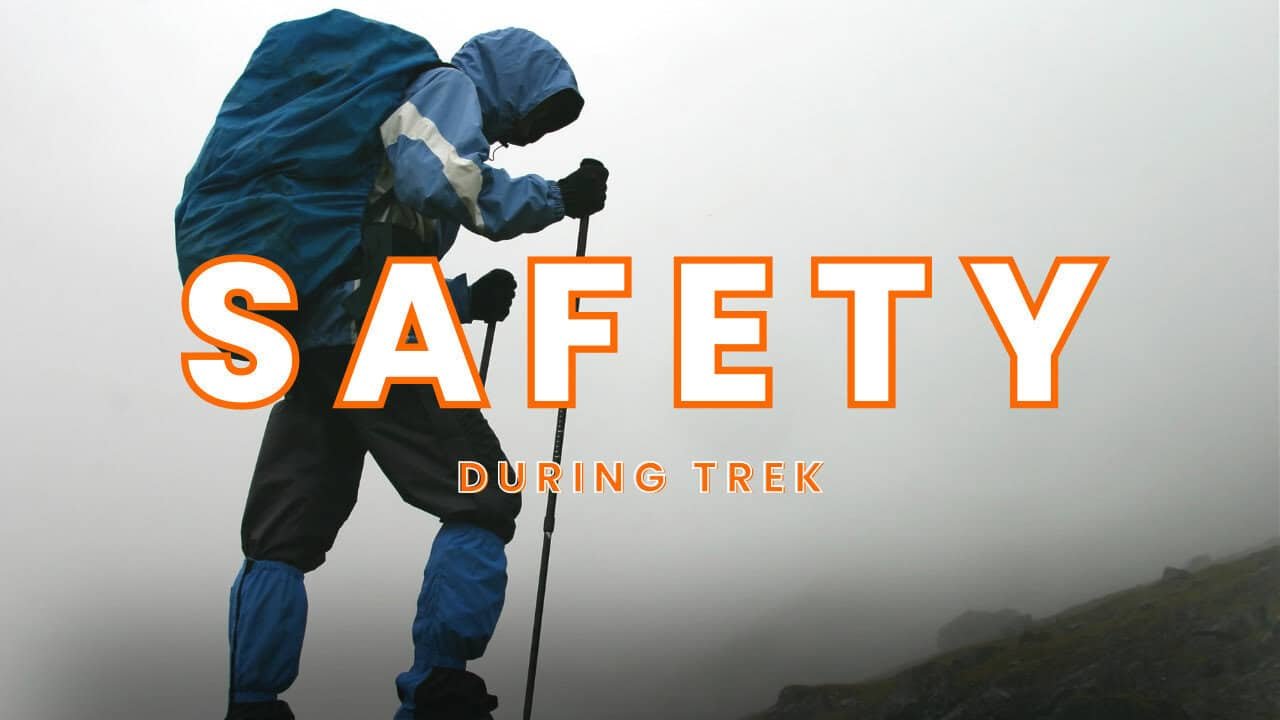
Trekking with us for the Mt. Black Peak is entirely safe because we have a team of trek leaders qualified in Wilderness first-aid and complete information about the high-altitude glitches. During the trek, we carry a full first-aid kit that contains all the essential medicines. Before trekking with us, you must ensure that you are medically fit for the trek; for us, your medical fitness is more important than anything else.
Right from our establishment, we at Trekup India have been continuously introducing new safety practices into Indian trekking to ensure the safety of voyagers. Trekup India introduced microspikes and made emergency bottled oxygen mandatory for all treks. Our trek leaders take your daily Pulse oximeter reading. We at Trekup India introduced the radio walkie-talkie as a safety communication device.
How can we ensure that your trek is safe with us?
We have noticed that most trek-organizing organizations do not follow these systems, but with time, they are following us; several competing companies are adopting these practices and organizing great, safe treks.
We ensure complete technical safety in the mountain. Our company has a vast team of more than 100 guides and trek leaders who serve on Himalayan treks. One of the best things about our team is that all the members are trained professionally by the Nehru Institute of Mountaineering, Indian Mountaineering Foundation Delhi, and Hanifle Center Outdoor Education Mussoorie.
Explore our New Safety Protocols
To ensure a perfect Trek, we have introduced some new safety checks to ensure excellent safety for our trekkers.
Our On-trek safety checks include:
- Daily oxygen saturation, along with pulse readings
- Stretchers team appointed on every trek
- Radios
- Trained mountain staff and complete safety
- Additional oxygen cylinders
- Special medical kit for high-altitude treks
- Microspikes on all types of snow treks
- Experienced Trek leaders, as well as safety
- Technical team on all snowy slopes
For Us, Your Safety Is the Top Priority
At Trekup India, you will find a team with local knowledge and fluency in English and Hindi. This helps ensure that you have a fantastic trek. Not only this, but we also pay attention to your health and safety because this is something we cannot ignore. All the team leaders involved in trekking have already undergone several professional courses in first aid, portable altitude chamber training, CPR, environmental awareness training, and advanced wilderness emergency medicine.
We also carry a complete first aid medical kit on every trek and trip we organize. Apart from the medical kit, we take a portable altitude chamber (if needed) and medical oxygen for all high-altitude treks. Our company has significant expertise in organizing all sorts of group adventure holidays for family groups, school and college groups, and friend groups. We have many travel options that suit different fitness levels and travelling styles.
Regardless of the group size, we value each and every member of our trekking groups. Our commitment to personal attention ensures that your needs and safety are always our top priority.
Who we are?
Trekup India has been a stalwart in the Adventure Tourism industry for 30 years. Since our inception, we have been dedicated to providing top-notch treks, voyages, trekking programs, and high-altitude expeditions. Our extensive experience is a testament to our commitment to your adventure and safety.
We organize treks in Uttarakhand, Kashmir, Sikkim, and Himachal while being part of the trekking community; we feature more than 75 documented Himalayan treks. In addition to other outdoor activities, our company also organizes trips for schools, colleges, and families.
Therefore, we maintain the quality of services offered to our valuable customers.
Must Read These Information Of Mt. Black Peak
Best time to do Mt. Black Peak
Best time to do black peak is summer months may, june & in autumn months of sept till mid oct.
Frequently Asked Questions About Trek
How difficult is Black Peak?
Climbing Mt. Black Peak is a challenging adventure that involves various technical aspects. The most difficult part of the climb is tackling a 75-foot vertical ice wall with a 70-degree slope near the summit. Traversing crevassed snowfields, navigating glaciers, crossing rocky moraines, and dealing with the high altitude all make the ascent of Black Peak a demanding feat that necessitates expertise in mountaineering gear and survival skills at such heights.





